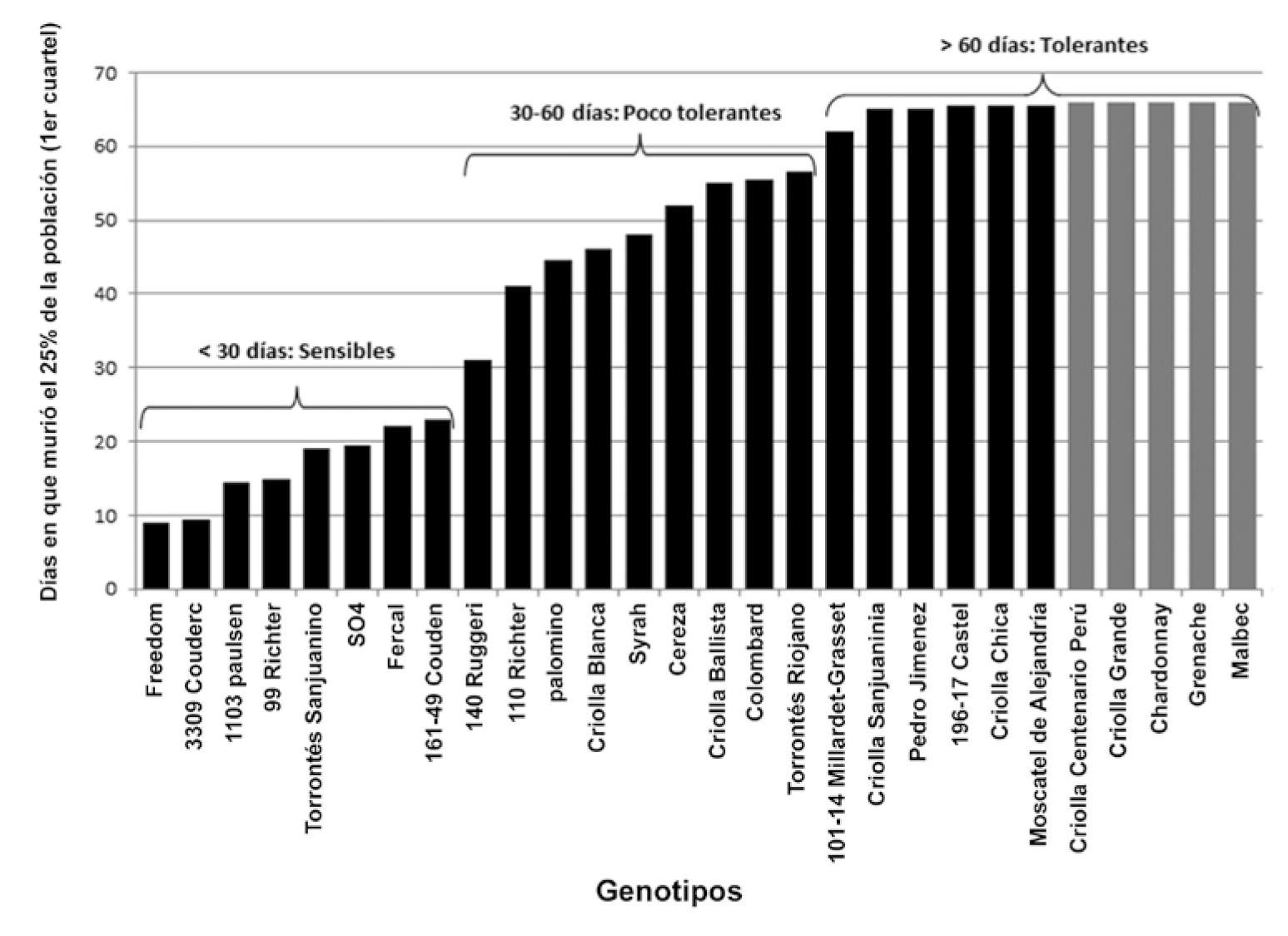Evaluation of NaCl tolerance on grapevines cultivars and hybrids rootstocks from genus Vitis
Keywords:
grapevine, salinity, rootstocksAbstract
The purpose of this study was to assess the survival to NaCl in 28 genotypes of the genus Vitis for identifying their degree of salt tolerance. The evaluation included 11 American rootstocks and 17 varieties from Vitis vinifera. Young vines of each genotype were drip-irrigated with a solution of 100 mM of NaCl during 66 days. The day in which 25% of the population had died (1st sample quartile) was calculated, allowing to classify the genotypes according to their salinity tolerance. Three groups of tolerance could be established. First, a sensitive group in which 25% died before the day 30 (3309 Couderc, 161-49 Couderc, Fercal, Freedom, 1103 Paulsen, 99 Richter, SO4, Torrontés Sanjuanino). Second, a moderately tolerant group in which 25% died between the days 30 and 60 (Cereza, Colombard, Criolla Blanca, Criolla Ballista, Palomino, 110 Richter, 140 Ruggeri, Syrah, Torrontés Riojano). Finally, the tolerant group in which 75% survived more than 60 days (101-14 Millardet-Grasset, 196-17 Castel, Criolla Chica, Criolla Sanjuanina, Moscatel de Alejandría, Pedro Giménez). Even in the most tolerant genotypes when the vines grew under salinity, the membranes integrity decreased 17% and the total chlorophyll content decreased 52%.

Downloads
Published
Issue
Section
License

This work is licensed under a Creative Commons Attribution-NonCommercial-ShareAlike 3.0 Unported License.
Aquellos autores/as que tengan publicaciones con esta revista, aceptan las Políticas Editoriales.


